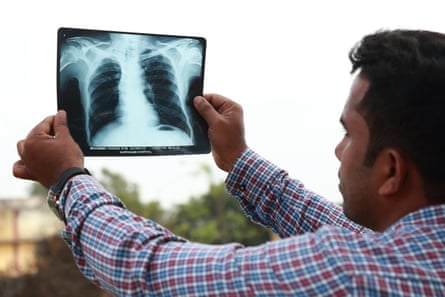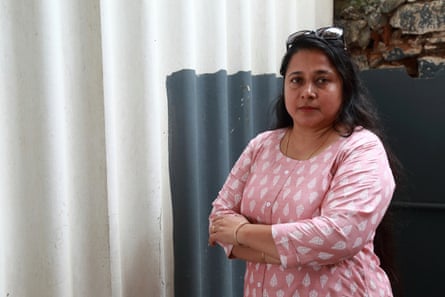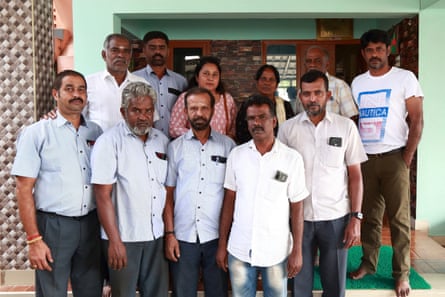For 40 years, Mohammad Younus worked at a factory that manufactured asbestos sheets in the southern Indian city of Coimbatore. By the time he was in his 50s, his body started giving up.
Asbestos dust had clogged his lungs, doctors told his family. Younus had tuberculosis and lung cancer. He died in 2021, aged 59. His wife and two sisters, who lived with Younus in a company apartment at the factory, have been diagnosed with asbestosis.
The family has received compensation from a trust fund set up by Turner and Newall, the former British asbestos firm that owned stakes in the Coimbatore factory for some of the time Younus worked there. But, says his son Saludeen Younus, 36, money can’t bring his father back, or fix the health of his mother and aunts.
“What’s gone is gone,” says Saludeen. “What we don’t know, is how much worse things could get for those of us who are alive.”
There are fears that sentiment is true for all of India, poised to become the world’s asbestos diseases capital.
Classified as a human carcinogen by the World Health Organization and national regulators in several countries, including the US, asbestos use is banned in 69 countries and strictly regulated in others.
India banned asbestos mining in 1993, when the government stopped reissuing licences, but it imports more of the toxic mineral than any other country. In 2021, India accounted for 44% of global imports, a 29% increase on 2020. Russia and Brazil are its key sources.
“The government is basically saying that Indian asbestos is poisonous, but Brazilian or Russian asbestos is not,” says Gopal Krishna, an occupational health researcher and founder of the Ban Asbestos Network of India. “It makes no sense.”
India’s unmatched scale of exposure to asbestos means that in the coming decades more than 6 million people could have an asbestos-related disease, including more than 600,000 cancer cases, according to research published by Mumbai’s Tata Institute of Social Sciences (TISS). “It’s a ticking timebomb,” says Abhijeet Vasant Jadhav, lead author of the research.
Asbestos is used in everything from cement to brake parts, says Krishna. “There’s almost no home or car in India that isn’t being built with asbestos as an ingredient. We are all exposed to it.”

In April, India’s environment minister, Ashwini Choubey, told parliament there were no plans to ban asbestos. He said the government is following the supreme court’s guidelines to mitigate adverse health effects.
But the reality is more complicated. India recognises asbestosis under its occupational hazards law, so those who can prove a diagnosis is linked to their work are theoretically eligible for compensation. But in many cases the symptoms of asbestosis and mesothelioma – a cancer caused by asbestos that affects lung and abdomen tissue – do not develop until 20 to 35 years after exposure, making it harder for people to establish a direct connection to a workplace.
The long latency between exposure to asbestos – even indirectly through clothing carrying fibres or dust – and the development of a disease also means that those with mild symptoms don’t know what the future holds.
Mareena Hawkes, 42, lived next door to Younus in Coimbatore. Her husband started working at the factory in 1998. In 2004, their then three-year-old daughter started having breathing difficulties. Within a couple of years, Hawkes and her husband developed similar symptoms. In 2010, a doctor told them it was too dangerous to continue living near the factory.

The family moved and Hawkes’s husband quit his job. Twelve years later, all three still have violent bouts of wheezing. “We don’t know if it will develop into something worse,” says Hawkes.
India’s vulnerability to asbestos-related diseases is due to more than the inherent nature of these conditions, say doctors. The country lacks a trained cadre of medical professionals capable of identifying workplace illnesses – occupational health is not taught as a dedicated stream in medical schools.
“We don’t have doctors who know what to look for when it comes to occupational diseases,” says Venkiteswaran Muralidhar, professor of general surgery at Chettinad Medical College in Chennai, who holds clinics in communities exposed to asbestos.
Jadhav believes India’s already fragile public health infrastructure will struggle to keep pace with the predicted explosion of cases in the coming years. Asbestos-related cancers are incurable and mesothelioma carries a life expectancy of one to three years, so palliative care will be essential. In 2019, Kerala, which has a more robust health system than other states, had 316 palliative centres. But there were just 159 in the rest of India.
There is also a hesitation on the part of many people living near asbestos factories to blame companies for making them ill, says Krishna. If the firm shuts down or moves away, the community loses jobs.

India’s notoriously slow legal system – trial courts had 40 million cases pending in April – further serves as a disincentive for many people thinking of seeking compensation, says Krishnendu Mukherjee, a barrister who practises in India and London.
Mukherjee has helped more than 3,000 former Turner and Newall workers in India – including the Younus family – win compensation totalling more than £15m. The British firm filed for bankruptcy in 2001 and set up a trust fund to compensate workers. “Getting compensation from an Indian company is much, much harder,” Mukherjee says.
In Coimbatore, Saludeen’s mother and aunts are now only able to walk for a few minutes before they need to rest. Hawkes’s wheezing reminds her of the years her family spent breathing asbestos. “We thought we had left it all behind,” she says. “But the asbestos just won’t leave us.”
Source- https://www.theguardian.com/global-development/2022/dec/19/we-are-all-exposed-to-it-the-human-face-of-indias-asbestos-timebomb

